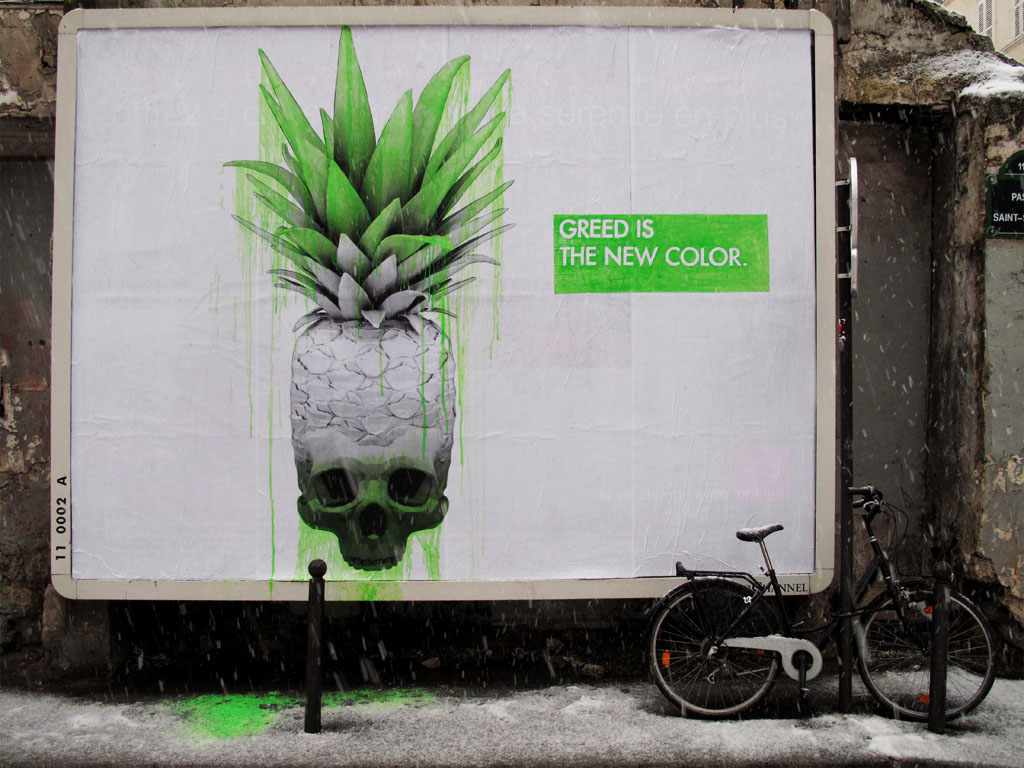
For the last few years I have rather admired Ludo’s art – a surreal mash up of nature and technology. So I was rather happy when I heard he was headed over to London to put on his first solo show in the city at one of my favourite galleries, High Roller Society. Eager to see his work I popped along a couple of hours before the gallery doors opened to meet Ludo and to have a chat about his work, bus stops and Thrasher magazine…
Hey Ludo, welcome to London. Having had a browse of your website, the thing that perhaps struck me most, alongside you art of course, was a quote by the founder of Surrealism, André Breton.
“Collage allows people with no technique to make works of art, to express themselves in a visual way.”
But I’m sure that many would argue that you have a fantastic artistic technique, so why the quote and why do you choose to produce collages and paste ups?
I think the quote is more about saying something. I mean, everyone can say something with whatever they want. So it’s not about technique, or about a nice style. And I like things that say something, so I don’t really care about the technique, it’s all about the message. Collage and paste ups give me allow me to do that. It’s a technique that just suits me.
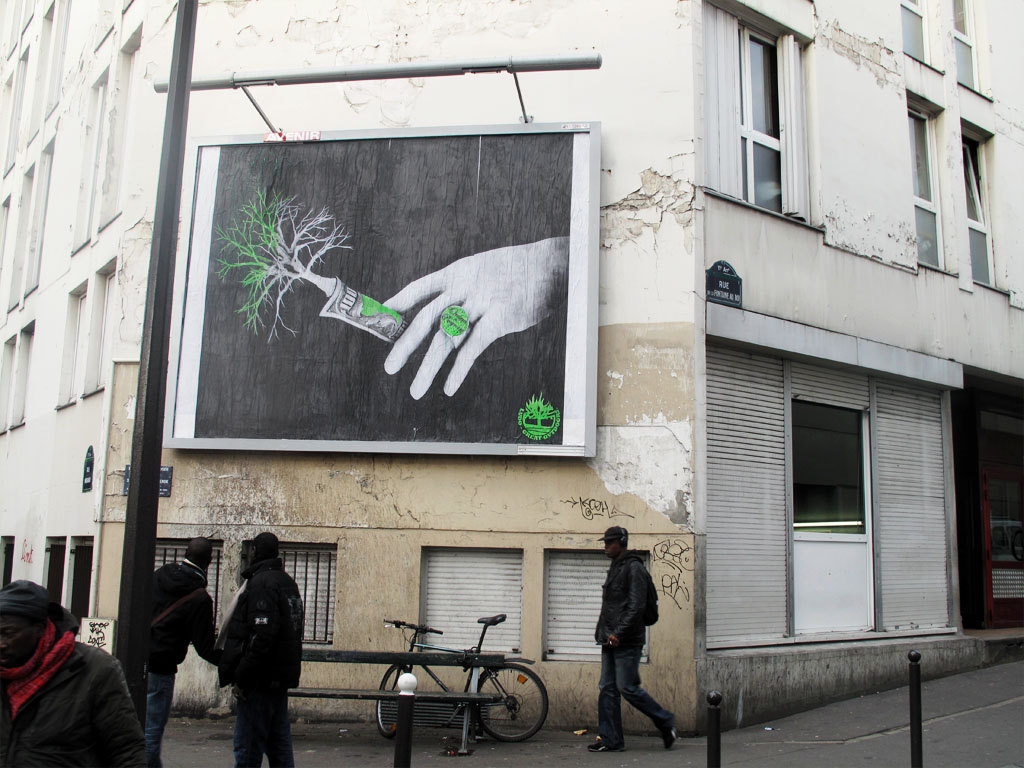
Well you have certainly mastered the art of the paste up. Did you ever go to art school or college?
I did some studies in Milan. Doing some graphic and design stuff.
So do you come from a more graphic background then?
Yeah.
But being a street artist did you ever start out tagging, following the more traditional graffiti route?
Yeah, I started tagging when I was about 13 or 14 years old. I used to write on trains and everything, I used to love that kind of thing. But it’s just visual, it’s just writing your name. I felt there was less depth to it, I couldn’t say as much as I can with paste-ups.
Do you still go tagging now?
No, not any more. I still like it but my style has evolved and I just stick to that.
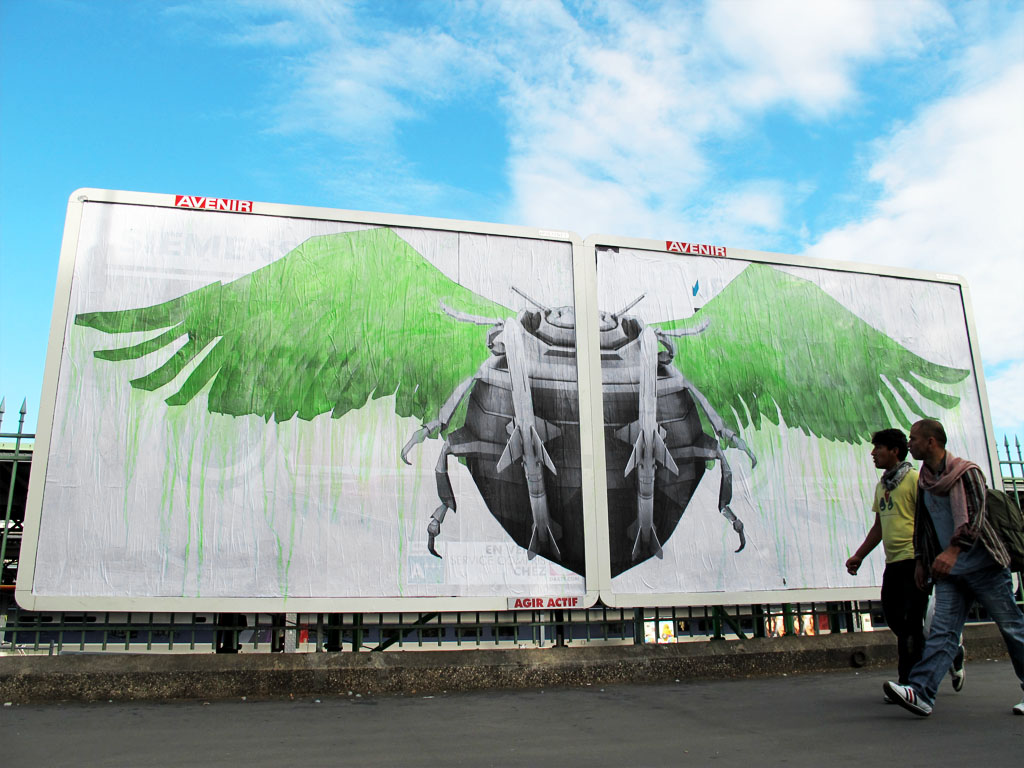
Much of your work is encompassed by the term Nature’s Revenge. Can you tell me a little about it and why did you choose to juxtapose machinery and mechanical objects with natural ones?
Honestly I don’t know why. It just started one day and I continued with it. I like to play with art, and I like to contrast things – curves and squares, straight lines and organic shapes, cold and hard, grey and colour.
So it’s more about the contrast rather than the content?
Exactly, and it means I can say whatever I want. I feel like I don’t need anything else to portray what I want to say.
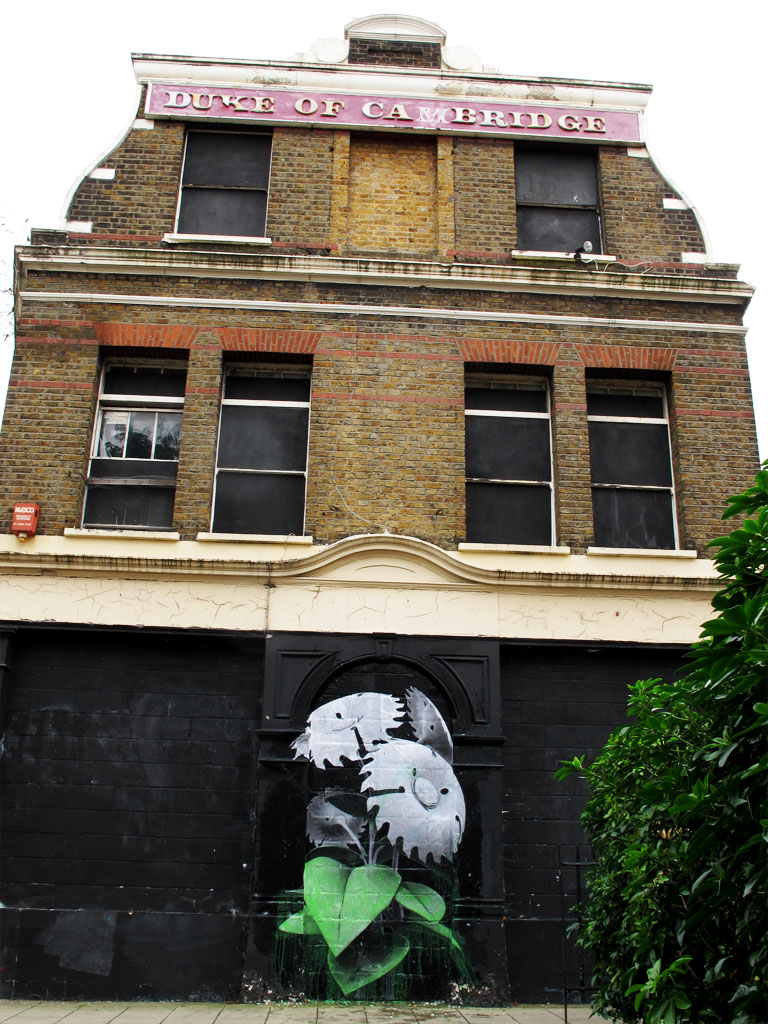
I personally really like the fact that your work is in an urban setting. It’s almost like nature is re-claiming back space that was once green but has now been covered in concrete.
Of course, but perhaps it’s more about putting something in front of someone. Making nature really common, making you ask; who cares about nature? Who cares about the flower? I know its stupid to say that, but I like making things really big, violent and sort of rough. A mix of nature and domestic things, making people think.
I wanted to ask about the use of the colour green in your work? You have almost become famous for the ‘Ludo green’. Why did you choose green and why only one colour?
I don’t really know! I think it’s because I don’t like too much colour in my work. I started with grey and then just added one colour. And I thought “Yeah I’m happy with that.” But I don’t really have any reason for green, I just like the colour and it’s maybe a bit unusual.
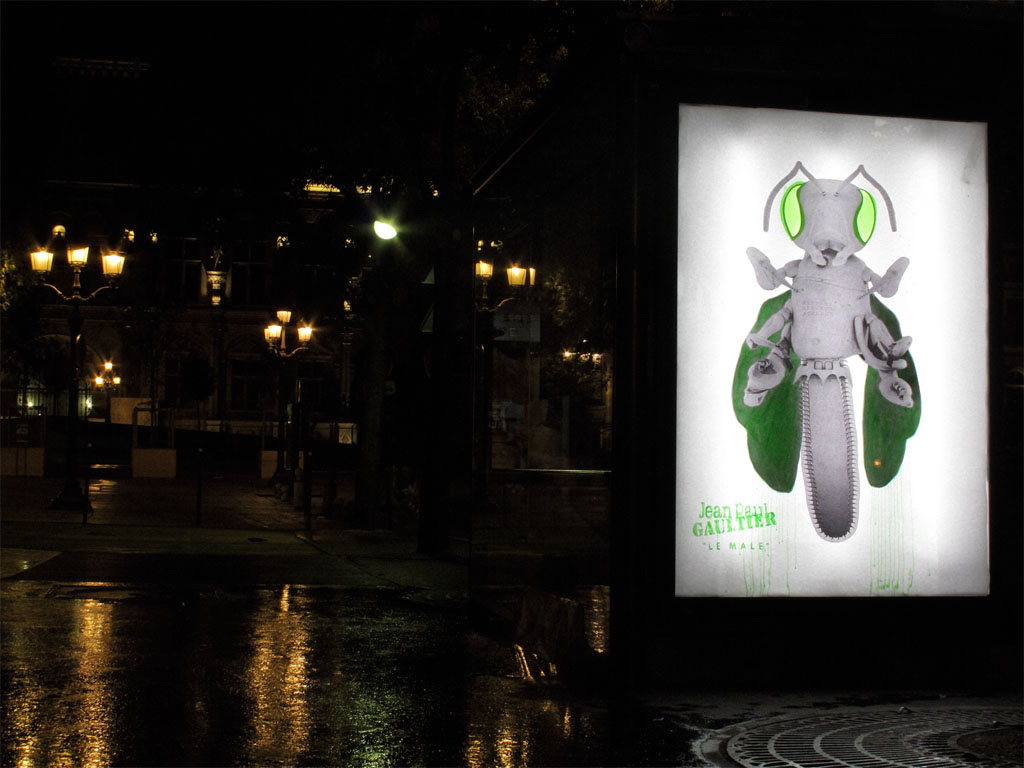
Your “co-branding” project was based around re-appropriating advertising. Do you have anything against advertising in particular? And why did you concentrate on adverts in bus stops?
I think it’s more about trying to use the spaces within the bus stops. I don’t have anything against advertising, and as artists I think we also do advertising in a way when we step outside. But when I see a commercial, I will think how I could re-create it. I will take an advert and change it and put it in my way. But I like the space they have, I like the bus shelters, it’s maybe more about the space than the advertising.
How long do you find these bus stops advert hacks tend to last? Are they removed instantly or do they go unnoticed by the authorities for at least a few days?
Oh, it depends. I know when they change the adverts and billboards, so I try to be clever and go the day after. At least then I know that the piece should last for six days until they are changed again. I do the same for bus shelters. And during the weekends the authorities don’t work so I will go on a Friday night because then you know you will have your work up for at least two or three days.
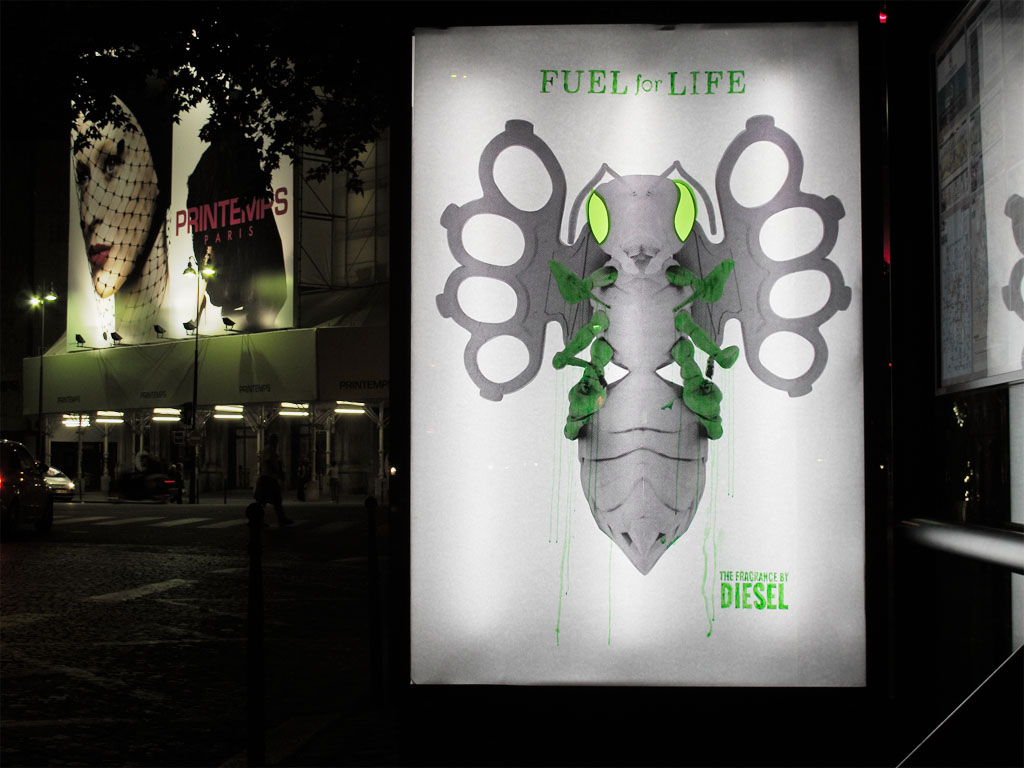
And the same with your paste-up pieces, how long do you find they last when up on a wall?
Again, it depends. I saw some in Paris the other day that have been there for over a year, but then some just go the day after I put them up.
Is this because the authorities remove them or do people steal them?
I actually think it’s to steal them. I once saw someone taking one.
But I like to see people’s reaction to my work when I change billboards and adverts. I like them to think; “What, what, what?! There is a collage, a commercial, what is it for? Is it new?” And when you have used a Nike logo, they think, “What are they saying? But ok, they have used that logo so it must be a commercial. So it might be something new?”
I like just staying and watching. I like the reaction, and to see how people think. I find it funny, especially that people think it has to be selling something.
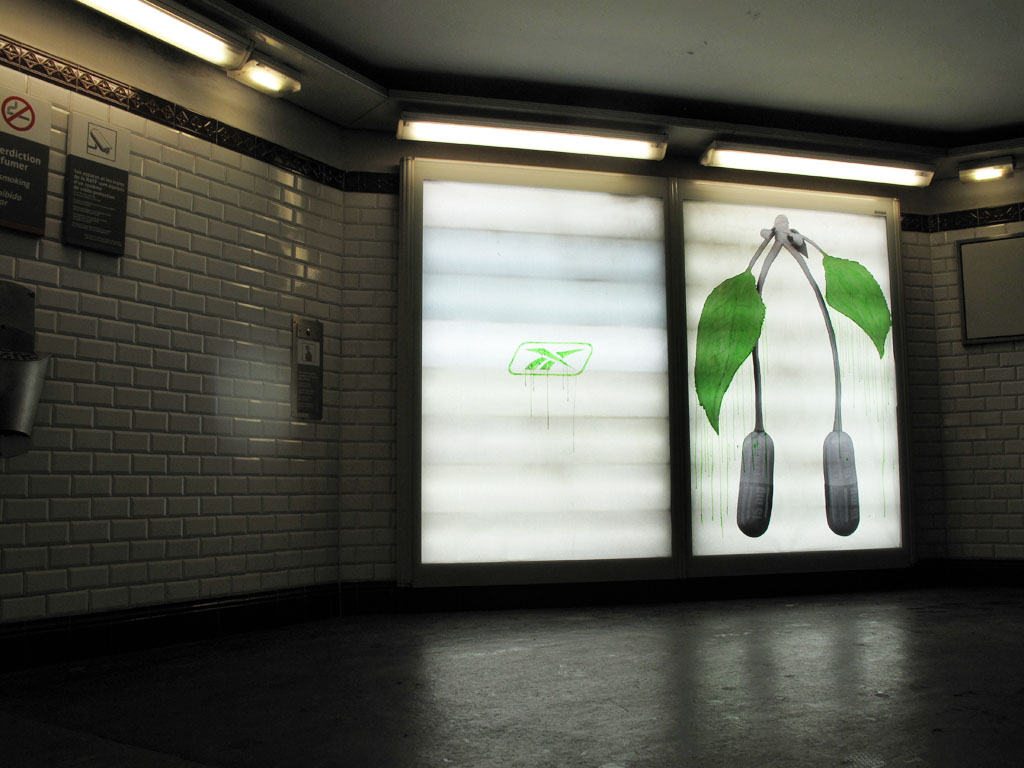
Perhaps it’s because in the modern society there is that expectancy that everything is actually trying to sell you something?
Yeah, exactly. I actually once had someone that asked me to pay to put up work.
Really?
Yeah, he came out of his shop and said, “Do you know you have to pay to put things up there? Usually you have to pay.” But why? You can’t rent public space!
Ha ha, I hope you didn’t pay! Having been to London a couple of times now, what do you think of the graffiti and street art here and how does it differ from Paris, or perhaps other places you have travelled to?
I think in general its more quiet now, which is good. And there are some people here that I really like and respect. In Paris, it’s perhaps more decorative, which is not always that good. And then New York is maybe a bit more rough and I like working there. I really like the vibes, they are great and I like it a lot. But I think London is actually between the two, a mix of both.
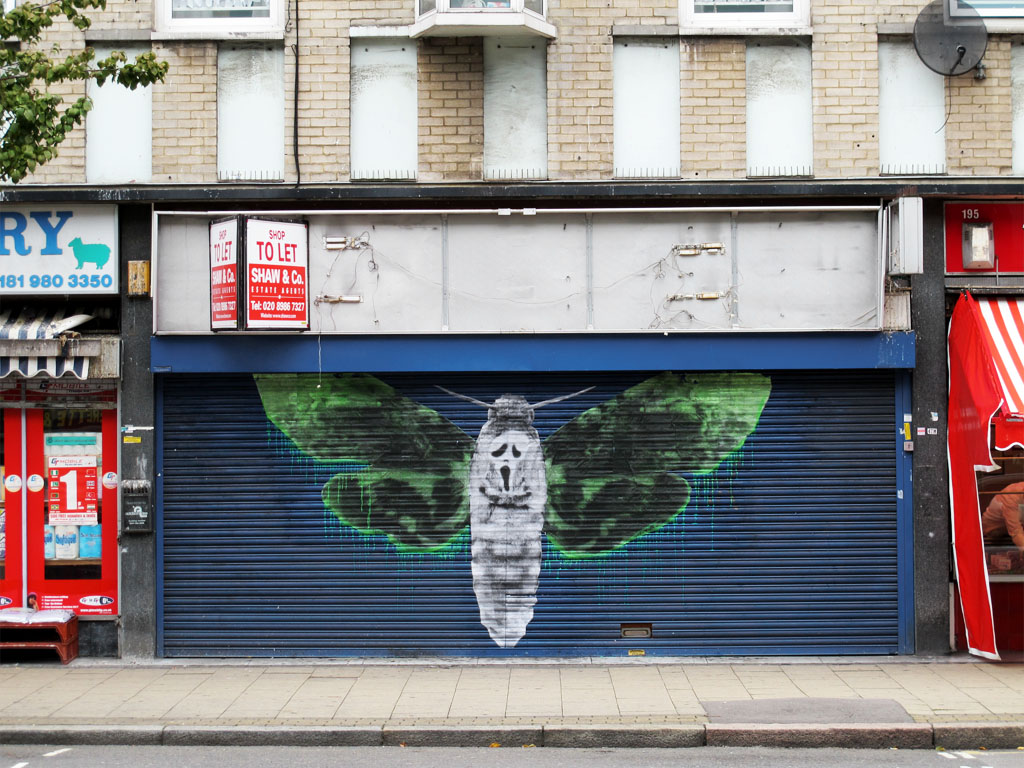
Moving onto your gallery work, High Roller Society is playing host to Metamorphosis, your first solo show in London. Can you explain a bit about it, your influences and thinking behind the pieces?
It’s really about what I have listened to, or what I did, or things I’m still doing. Like the Thrasher piece I have done. I really loved the old colours from the 80s in the magazine, all the graphics and images, I was really into all that kind of stuff. So the show is about that and other simple things that reflect my simple life. Nothing too political or too social.
So it’s a bit of a retrospective of your life?
Yeah, yeah. It’s all about remembering moments.
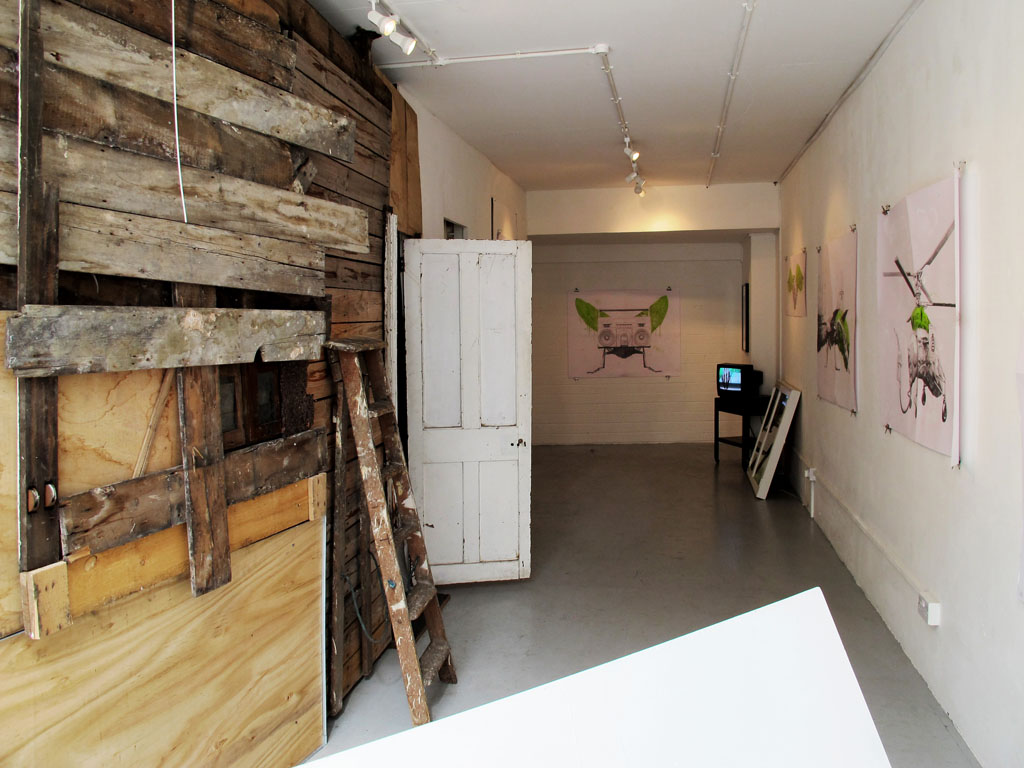
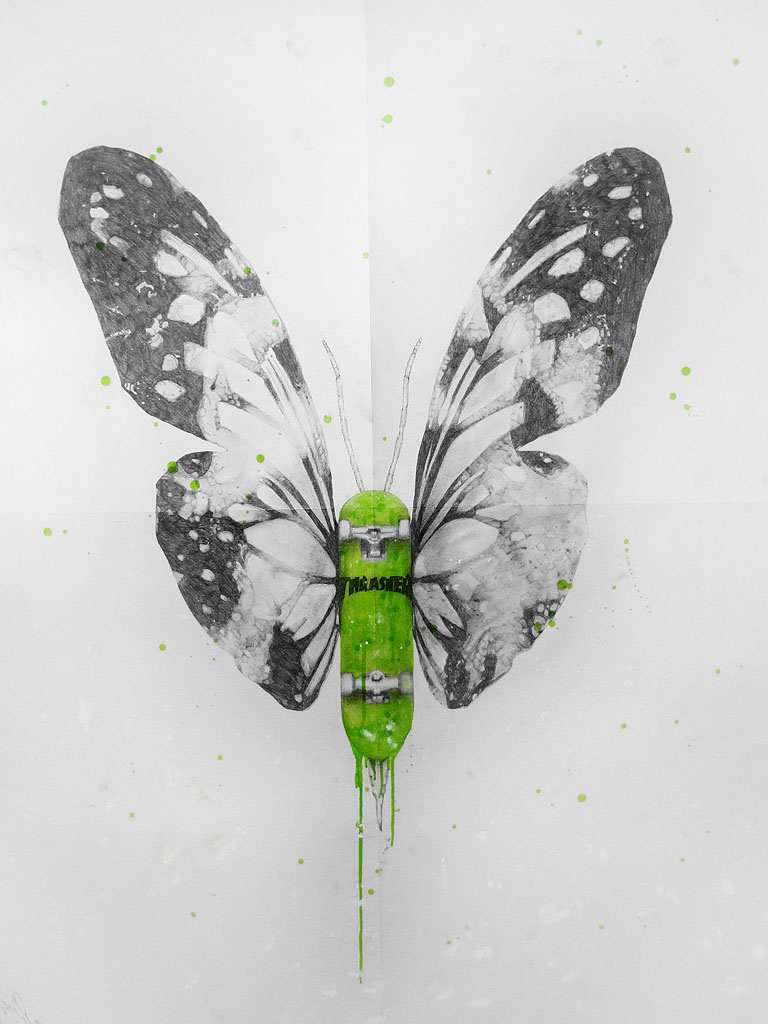
When you move from the streets into your studio and the gallery do you find your way of thinking and ways of producing your art changes? Is there a different mentality?
Of course, my thinking changes but my technique does too. Outside I use acrylic and inside I use oil. And my pieces inside are aimed to work inside. When you go outside you try to use the space the best you can and so it would be stupid to work inside in the same way. But you must also grab the chance to show your stuff inside, you have to make sure it is interesting and try to improve your work.
Obviously that’s where your sculptural work comes in.
And the house we built in the gallery, I think it’s great to have the chance to do that. My sculptures started as I though it would just be nice to do one and try it, but then I stopped for years as I was more into doing stuff outside. I would just go out everyday and put my work up. But now, I want to do more, I really like making them. I want to do bigger pieces and to progress, but I also want to progress outside, I was to improve all the time and hopefully I will do.
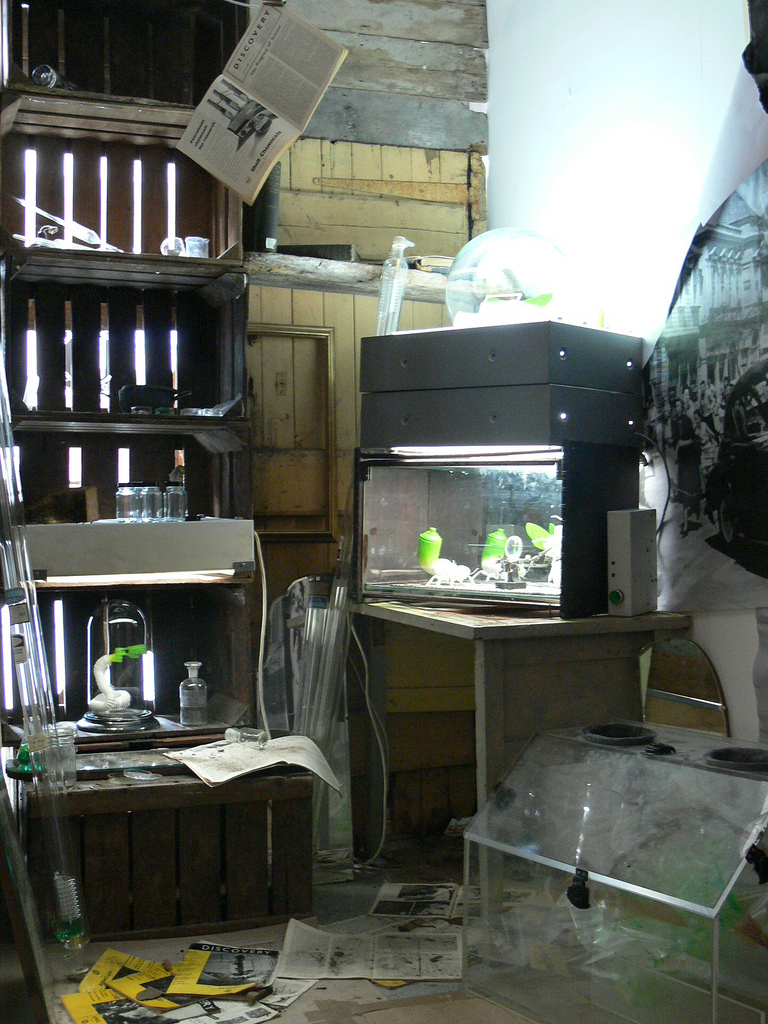
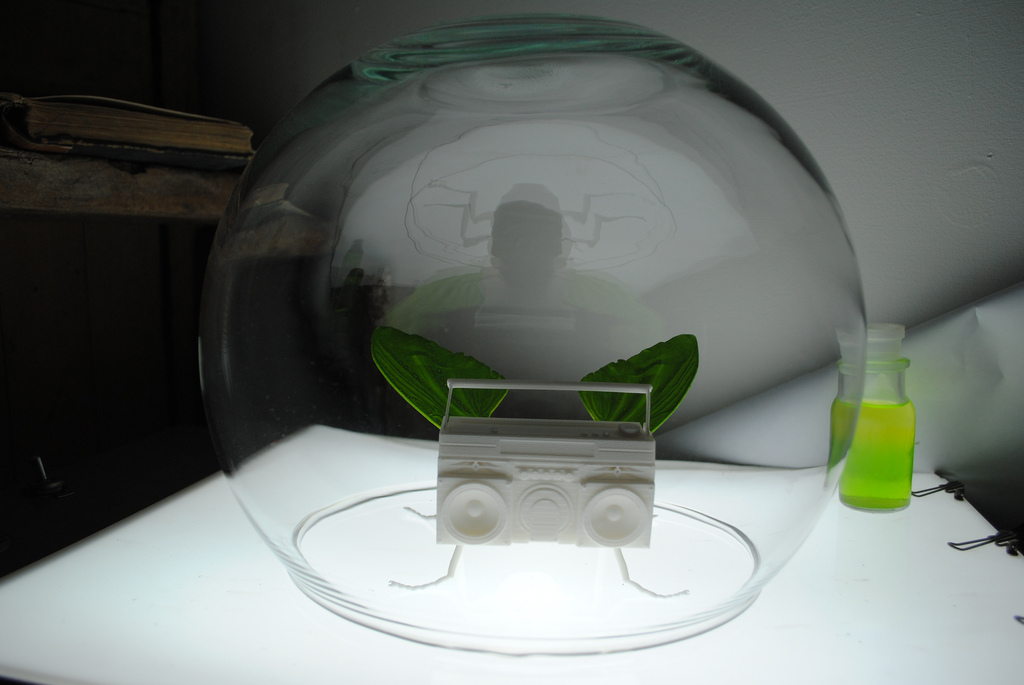
If you want to check out Ludo’s newly built house and sculptures for yourself, alongside his fantastic graphite drawings, then head over to High Roller Society sometime before October 7th. It is well worth the trip, especially as you have a chance of catching some of Ludo’s freshly pasted pieces on the streets. Have a hunt around Shoreditch and Hackney and see what you can see.
More information about the show, including opening times, can be found on the High Roller Society website.
And for a fantastic review of the show opening, check out Graffoto Blog.
Photos by Ludo, High Roller Society and Severed Frequencies
